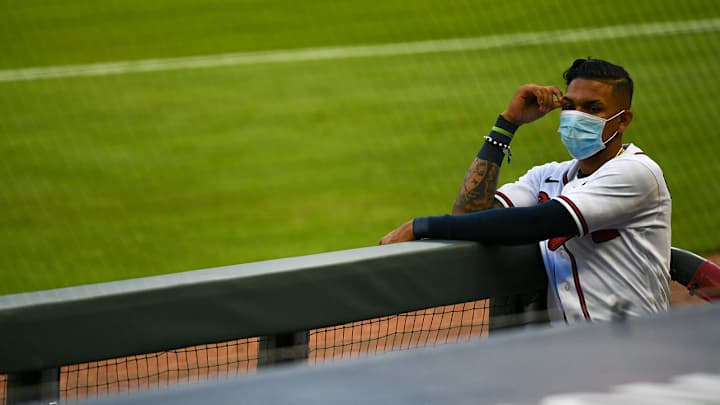MLB Faces an Uncertain Path to the Postseason

The road from here to the World Series for Major League Baseball is a journey with no navigation system through thick nighttime fog: looking too far down the road is futile and the route likely will be circuitous.
Reacting to COVID-19 outbreaks among the Miami Marlins and St. Louis Cardinals, MLB invented seven-inning games for doubleheaders, boosted September and postseason rosters from 26 players to 28, and shuffled 23 games involving 12 teams like a deck of cards–and that was just in the first two weeks in A Season at the Improv.
Keeping players and staff safe amid a global pandemic was the guiding force behind the Operations Manual drafted by MLB and the players association–protocols that were tightened after the outbreaks. The goals of keeping the games going are to crown a champion and to collect $1 billion in television money from an expanded postseason.
“There is no way the owners want to shut the season down, not with $1 billion sitting there at the end,” said one agent. “They won’t. And the players are on board. The players want to play.”
To work through, around and within COVID-19, the regular season had to be compromised, such as a regionally-based 60-game schedule. It will continue to be compromised as needed. The Marlins, for instance, are scheduled to play 27 games in the final 23 days, including one 10-day stretch with four doubleheaders.
Playoff spots could be decided by winning percentage among teams without a like number of games. MLB intends to start the postseason as scheduled Sept. 29. That’s where the real money is (almost two-thirds of all national TV money) as well as the real meaning (see 1994, the strike year without a World Series being a dumpster fire compared to 1981, a strike year with one).
The postseason had been worth $787 million until the expansion from 10 to 16 teams added another digit to the take. The top four seeds in each league will host all games in a best-of-three first round series against the lower four seeds, after which the Division Series, League Championship Series and World Series continue as usual. The inventory of maximum possible clinching games (the better-rated games) increases from 26 to 40.
Players agreed to the format on a one-year basis, though the sides will discuss adopting it long term. Owners see it creating a ripple effect: more playoff spots equal more contenders, which equal more meaningful games in September, which equal better attendance and better ratings for regional sports networks.
Getting to a World Series clincher is so important you could see more improvisation in the postseason. Take travel, for instance. The Marlins and Cardinals outbreaks happened while the teams were traveling. Why have teams travel coast to coast, perhaps twice within a series, when for safety it was avoided as much as possible in the regular season? Nobody is playing in front of their home fans, anyway.
Imagine tournament-style, weather-friendly venues, as in the World Baseball Classic, for the LCS and World Series, such as Anaheim and San Diego, or Texas and Houston. Or imagine a World Series between the Dodgers and Yankees with no games at Dodger Stadium or Yankee Stadium, but all games in one, neutral park–in effect, a postseason “bubble.” A high-ranking MLB source confirmed such a plan is in discussion, including using two venues nearby that also give protection against weather, such as Southern California ballparks or the two ballparks in Texas, but no decisions have been made.
The World Series is scheduled to wrap in the last week of October. In the Fog of Covid, that is many miles and many improvisations away.

Tom Verducci is a senior writer for Sports Illustrated who has covered Major League Baseball since 1981. He also serves as an analyst for FOX Sports and the MLB Network; is a New York Times best-selling author; and cohosts The Book of Joe podcast with Joe Maddon. A five-time Emmy Award winner across three categories (studio analyst, reporter, short form writing) and nominated in a fourth (game analyst), he is a three-time National Sportswriter of the Year winner, two-time National Magazine Award finalist, and a Penn State Distinguished Alumnus Award recipient. Verducci is a member of the National Sports Media Hall of Fame, Baseball Writers Association of America (including past New York chapter chairman) and a Baseball Hall of Fame voter since 1993. He also is the only writer to be a game analyst for World Series telecasts. He lives in New Jersey with his wife, with whom he has two children.